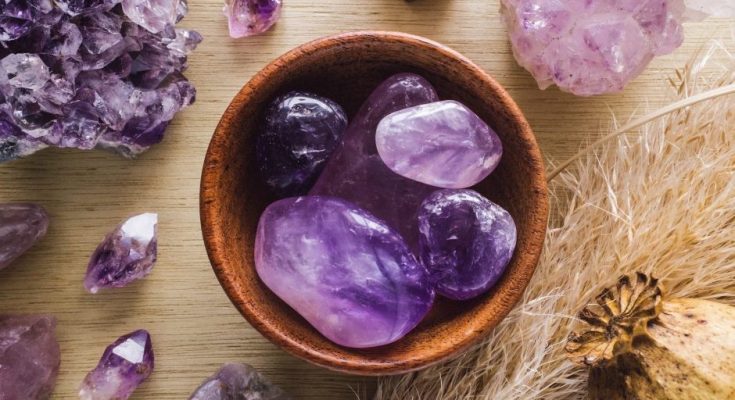Stones have captivated humans for centuries with their beauty, rarity, and symbolism. Whether you’re a gemstone enthusiast, jewelry collector, or someone looking to make a wise investment, being able to identify valuable and high-quality stones is essential.
In this blog post, we will explore the characteristics of valuable stones, how to identify precious and semi-precious gems, methods for testing stone authenticity, common techniques used in gemstone treatments, where to buy high-quality stones, and expert tips for identifying valuable stones.
Characteristics of Valuable Stones
Valuable stones possess certain characteristics that set them apart from their less valuable counterparts. These characteristics include:
- Clarity: Valuable stones are usually transparent or have minimal inclusions.
- Color: Vibrant and rare colors increase the value of a stone.
- Cut: Precise and symmetrical cuts maximize the stone’s beauty and brilliance.
- Carat Weight: The larger the stone, the greater its value, assuming all other factors are equal.
- Hardness: Valuable stones typically have high hardness, making them more resistant to scratches.
- Rarity: Stones that are rare or difficult to find are often more valuable.
By understanding these characteristics, you can begin to identify stones that may be valuable and high-quality.
Identifying Precious Stones
Precious stones are highly valued for their beauty, durability, and rarity. The most well-known precious stones include diamonds, rubies, and sapphires.
Diamonds
Diamonds are known for their exceptional brilliance and hardness. When identifying diamonds, you should consider the following:
- Color: Diamonds come in various colors, with the most valuable ones being colorless or near colorless.
- Clarity: Look for diamonds with minimal inclusions or blemishes.
- Brilliance: Diamonds should reflect light and exhibit excellent sparkle.
- Hardness: Test the stone’s hardness by seeing if it can scratch glass.
- Cut: Well-cut diamonds will maximize their brilliance and fire.
Rubies
Rubies are prized for their deep red color and historical significance. Here’s how to identify rubies:
- Color: Look for intense red hues with no undertones of orange or purple.
- Clarity: Rubies should have minimal visible inclusions.
- Transparency: The stone should be transparent, allowing light to pass through.
- Hardness: Rubies are second only to diamonds in terms of hardness.
- Origin: Burmese rubies from Myanmar are particularly sought after.
Sapphires
Sapphires, known for their rich blue color, are highly prized gems. To identify sapphires, consider the following:
- Color: Look for vibrant blue sapphires, although sapphires can come in a range of colors.
- Clarity: Sapphires should have few visible inclusions or blemishes.
- Transparency: High-quality sapphires are transparent to slightly translucent.
- Hardness: Sapphires are the third hardest mineral, after diamonds and rubies.
- Origin: Sapphires from Kashmir, Myanmar, and Ceylon (Sri Lanka) are highly valued.
Identifying Semi-Precious Stones
Unlike precious stones, semi-precious stones are more abundant and therefore, generally less expensive. However, they still possess unique beauty and can be valuable in their own right. Some well-known semi-precious stones include amethyst, citrine, garnet, and topaz. When identifying semi-precious stones, characteristics such as color, clarity, transparency, and origin should be considered.
Testing Methods for Stone Authenticity
Various testing methods can help determine the authenticity of gemstones. These methods include:
Acid Test
The acid test involves applying acid to the stone to observe its reaction. Different acids are used depending on the type of stone being tested.
Scratch Test
The scratch test involves using a hard material to scratch the surface of the stone. The hardness of the stone being tested is compared to the known hardness of different gemstones.
Magnetic Test
The magnetic test is used to identify magnetic stones such as magnetite or pyrrhotite. If a stone is attracted to a magnet, it is likely not a valuable gemstone.
Ultraviolet (UV) Light Test
The UV light test involves exposing the stone to ultraviolet light to observe its fluorescence. Different gemstones exhibit varying degrees of fluorescence.
Density Test
The density test compares the density of the stone to known values to determine if it is a genuine gemstone. This test requires precise measurements and calculations.
Common Techniques Used in Gemstone Treatments
Gemstone treatments are processes used to enhance the appearance or durability of a stone. Some common gemstone treatments include:
Heat Treatment
Heat treatment involves exposing a gemstone to high temperatures to enhance its color or clarity. This treatment is commonly used for sapphires and rubies.
Irradiation and Annealing
Irradiation and annealing are used to alter the color of certain gemstones, including diamonds and topaz. Irradiation exposes the stone to radiation, and annealing stabilizes the color.
Surface Coating
Surface coating involves applying a thin layer of material, such as paint or metallic compounds, to enhance the color or luster of a stone.
Dyeing and Bleaching
Dyeing and bleaching are used to alter the color or remove impurities from gemstones. It is commonly done with porous stones such as jade or pearls.
Diffusion and Filling
Diffusion involves enhancing the color of a gemstone by infusing it with certain elements. Filling refers to filling surface-reaching fractures or cavities with a glass-like substance to improve the stone’s clarity or durability.
Where to Buy High-Quality Stones
Finding a reputable and trustworthy source is crucial when buying high-quality stones. Some reliable options include:
- Established Jewelry Stores: Reputable jewelry stores often have gemologists on staff who can provide expert advice and authenticate gemstones.
- Auction Houses: Auction houses can be a great place to find rare and valuable gemstones, but be sure to do your research beforehand.
- Gemstone Trade Shows: Trade shows bring together reputable gemstone dealers and provide an opportunity to compare and purchase stones.
- Online Marketplaces: Online marketplaces can offer a wide range of gemstones, but be cautious and research the seller’s reputation before making a purchase.
Expert Tips for Identifying Valuable Stones
Using a Loupe or Magnifying Glass
Inspecting a stone with a loupe or magnifying glass allows you to see the stone’s inclusions, cut details, and other identifying characteristics that may not be visible to the naked eye.
Conducting a Visual Inspection
Observe the stone under proper lighting conditions and look for any irregularities in color, shape, or surface quality.
Checking for Clarity and Cut
Examine the stone for any visible inclusions, blemishes, or poorly executed cuts, as these can affect its value and beauty.
Evaluating Color and Transparency
Assess the stone’s color intensity, hue, and saturation. A high-quality stone will typically have a vibrant and even color distribution.
Seeking Professional Expertise
If you’re unsure about the authenticity or value of a stone, it’s always recommended to consult with a certified gemologist or jeweler.
Conclusion
Identifying valuable and high-quality stones requires a combination of knowledge, observation, and expertise. By understanding the characteristics of valuable stones, employing reliable testing methods, and seeking out reputable sources, you can make informed decisions when purchasing or sell diamonds san francisco. Remember, if you’re unsure about a stone’s authenticity or value, always seek professional advice. Happy gem hunting!




